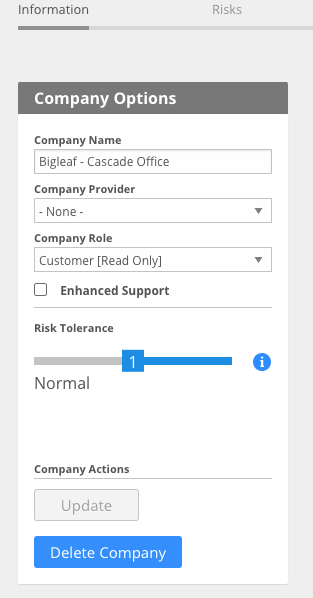In our last software release, we introduced Bigleaf risk monitoring, our new feature that uses artificial intelligence to give you fewer, but more insightful and actionable alerts on network issues that pose a risk to your business.
Today I’m pleased to share some improvements we’ve made to risk monitoring.
But first, I want to say thank you to everyone who has turned on risk monitoring so far. And an extra big thank you to everyone who’s sent feedback to our product team at product@bigleaf.net and shared your experience or stories with our support team. (More on some of those later in this blog post.) You make these updates possible and better.
What’s new in risk monitoring

In this month’s release, we’ve continued to improve how Bigleaf risk monitoring assesses the health and performance metrics to provide guidance on how to address the issues that could affect your business and site’s continuity or uptime. Many of the updates included refactor how risks are calculated and how they are associated with companies’ sensitivity levels.
Based on the usage we’ve seen so far and the customer conversations we’ve had, this will further improve how we align the prescriptive nature of our risk monitoring with customer needs.
For more details on what’s changed with risk monitoring, check out the release notes.
How risk monitoring is already making a difference
As soon as we turned on risk monitoring, Bigleaf customers started to report a positive impact. Here are some examples of what we’ve already heard so far.
Discovering an important issue that hasn’t caused a problem yet
One of our customers learned something surprising: One of their circuits had been down for over a month. Because they had a second circuit that Bigleaf automatically failed over to using the same IP, they hadn’t noticed any issues with their internet connectivity and didn’t think anything was out of the ordinary during that time.
As soon as they set up risk monitoring, they immediately received the risk notification that their primary circuit was down. Had that not happened, they would have continued to pay for that down circuit and been at risk of incurring downtime had their remaining circuit failed.
Verifying the network is working as intended
On the opposite side of the customer story above, another customer was able to use Bigleaf risk monitoring to verify that one of their circuits was disconnected, as intended. They had disabled that line because of infrastructure changes they made due to the COVID-19 shutdowns. Bigleaf risk monitoring showed them that no traffic was going through that circuit. That gave them the peace of mind that things were working exactly as intended.
Recognizing small issues that are signs of bigger issues
One of our Bigleaf home office customers had a circuit that was issuing low level latency and packet loss alerts. However, they always seemed to resolve relatively quickly, and they happened in a seemingly sporadic fashion. So, the less technical home user didn’t think that there was a bigger problem at hand. However, when risk monitoring came online, this customer received a risk alert identifying the issues that happened more often than they should, and suggesting that she contact her ISP. When she did, she learned that her hardware had loose connections. She was able to upgrade to a new router and speed plan that worked better, and for a lower monthly fee.
Try risk monitoring and let us know what you think
To turn on risk monitoring, log in to your Bigleaf dashboard, go to your account settings, and create a new alert destination to turn them on. You may also see a pop-up prompting you to set up risk monitoring alerts, and you can choose that option, as well. For more details, check out our post on how to set up and use risk monitoring.
We’d love to know what you think! Send your feedback or ideas for future improvements to product@bigleaf.net. And as always, if you have any questions or need support, don’t hesitate to contact us.







